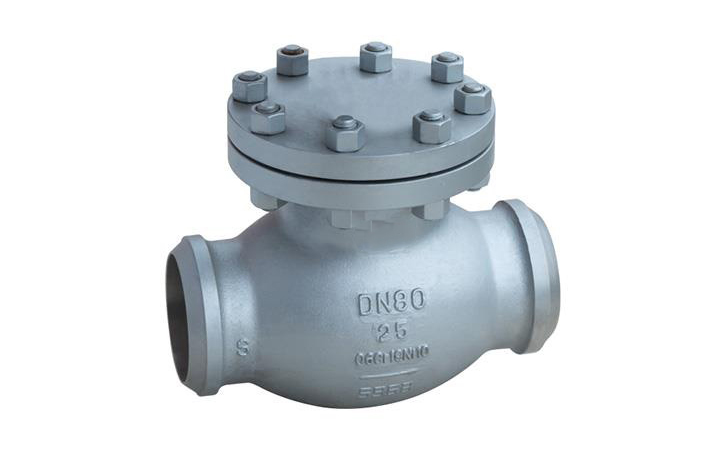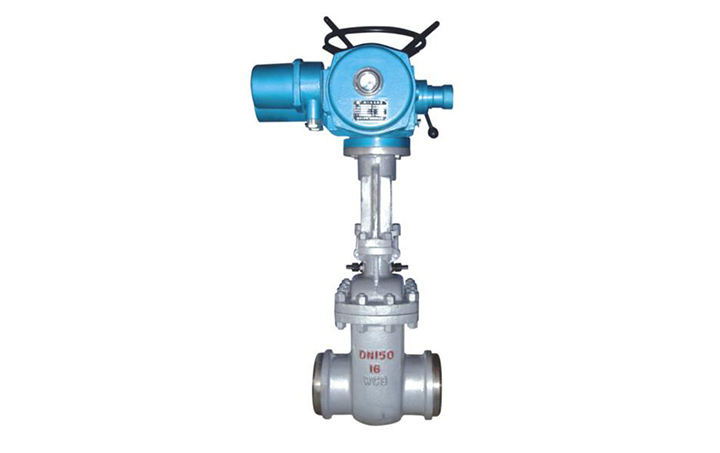The valves are indispensable for the conventional water production processes in
water plants, such as raw water intake, flocculation and sedimentation in
sedimentation tank, filtration in filter tank and water supply from the final outlet
pump house.However, the selection requirements for valves vary greatly in different
locations.The main differences are the diameter of the valve, the type of valve and
the control method of the valve.

Valve Distribution of Conventional Water System in Waterworks
1. Process valves for raw water intake
The characteristics of the head raw water valve are that the valve diameter is
large and it does not need to be operated frequently. Most of the valves need to be
operated only once a year or even several years. The valves are normally open or
closed for a long time.Therefore, in terms of control methods, more than 95% of the
valves are manual valves, all of which are gate valves or butterfly valves. Because
the head loss of gate valves is better than that of butterfly valves, the head valve
is slightly more than that of butterfly valves.The diameter is centralized in
1200~1600mm, and 3000mm valve is also present in the head intake pipe.
2. Valve of sedimentation tank
The valves of sedimentation tank are mainly intake valve, outlet valve and
isolation valve.Outlet valve is normally open, isolation valve is normally closed
and operated once a year. Therefore, manual gate valves are used for both valves,
and the specifications are distributed between 2200 x 1800 and 1200 x 840.The intake
valves of sedimentation tank are responsible for water distribution, which requires
frequent adjustment, reliable performance and scattered distribution in front of
each sedimentation tank. Electric control valves with intelligent control system are
used.It is a key link that determines the water quantity and system balance of
sedimentation tank. It is particularly important for water-making line to be a
system which is regulated dynamically according to the water output, and PID dynamic
tracking adjustment is also required. At this time, the allowable starting and
stopping frequency will have corresponding requirements for the full stroke time of
the valve.
3. Filter valve
The most common type of filter is a four-valve filter, which is also the most
basic configuration of the filter.That is, regardless of the filter type, there are
at least four types of valves: intake valve, drain valve, flushing valve and clean
water valve.Of course, now there are many 5-valve, 6-valve or even 7-valve filters,
which are also equipped with air scour valve, primary filter valve or one more
intake valve, etc.The butterfly valve is usually used to distinguish the water-
cleaning valve from the flushing valve in terms of its structure. This is mainly due
to the fact that both the water-cleaning valve and the flushing valve are installed
in the pipeline in the pipe gallery and the frequent adjustment of the water-
cleaning valve is required, while the flushing valve also has the need to regulate
the flushing intensity.As water intake and drainage are usually carried out through
channels, gate valves are basically used for both intake and drainage valves.The
diameter of the flushing valve of the filter is slightly larger than that of the
clean water valve. The flushing valve is basically between DN600 and DN800, while
the clean water valve is between DN400 and DN600.Dimensions of intake and drain
valves are related to channel dimensions.From the point of view of control method,
all four types of valves are controlled electrically or pneumatically.However, the
clean water valve must be an adjustable intelligent control mode in accordance with
the requirements of the inlet valve of the sedimentation tank.In addition,
considering the comprehensive wiring and modular design method, the control mode of
bus type or PLC site type can be selected for the filter valve.The former has the
advantage of saving wiring space, while the latter has the advantage of separating
the cell filter for easy maintenance, management and transplantation.
4. Pump house valve
Hydraulic machinery
in general field
The valves in the pump house are mainly intake valve, outlet valve, overhaul
valve and check valve on the pump unit.Butterfly valves are basically used for the
first three valves, but the difference lies in the control mode.Intake and overhaul
valves only need manual valves, because one is normally open and the other is
normally closed, while the outlet valve needs to be opened and closed every time the
pump is opened or stopped. If the factors of using the outlet valve to regulate the
water flow and make the pump have different working conditions to meet the demand
are considered, the outlet valve also needs to be controlled by an adjustable
intelligent device.To prevent reverse flow and water hammer, silent check valves and
slow-closing check valves with slight resistance are usually used.Sometimes, multi-
function valves are selected to integrate the water outlet check function.

Valves for water plant dosing system
The characteristics of water plant dosing system determine that the valve used
above has small diameter and small flow rate, but it requires high flow regulation,
high accuracy and fast speed. Therefore, flow control valve is usually selected.
This valve makes the flow capacity of medium only depend on the structure of the
valve itself, so that the flow regulation can be completed once.In addition, the
medium in the pipeline of the dosing system is ammonium sulfate, sodium hypochlorite
and other solutions, which requires the valve to also have corrosion resistance.In
addition, ball valves are used as switch valves and back pressure valves in the
dosing system.
Steps for valve selection
Determine the process requirements, i.e. determine the pressure and flow rate in
the field pipeline.
Select the type of valve according to the diameter of the pipeline and the on-
site operating conditions, and combine the process parameters of the first step to
select the valve. At the same time, decide whether to install the extension pipe
according to the installation position of the valve.
Drive mechanism is selected according to the transmission type. Butterfly valves
in water plants are mainly multi-turn rotary mechanism, while gate valves are
straight-stroke driving mechanism.
To determine the control mode, the selection of cylinder and matching driving
mechanism is for air control system, and electric actuator is for electric control
system.For the selection of electric actuator, speed ratio and output torque of
driving mechanism, interface type, speed and power of motor are determined according
to the parameters such as full stroke time and torque of valve.
Considering the protection level and communication method of the actuator,
whether to choose other configurations such as SCR or not.
Considering the protection level and communication method of the actuator,
whether to choose other configurations such as SCR or not.With the improvement of
automation level, the requirements for valves in water plants become higher and
higher. However, in any case, the general selection is within the scope described in
this paper.Main valves are mentioned in this paper, of course, water plants also use
exhaust valves, solenoid valves, etc.






